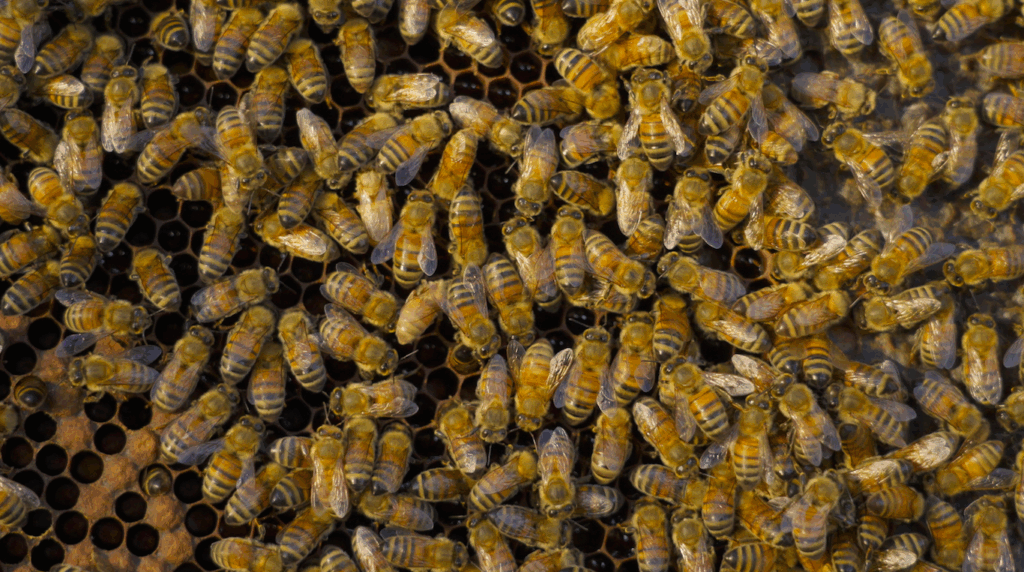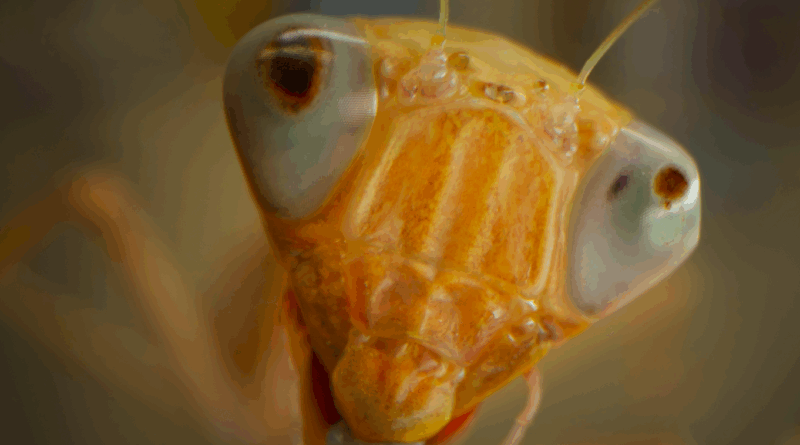INTERVIEW: New PBS series showcases ‘Bugs That Rule the World’
Photo: Bugs That Rule the World is a new four-part series on PBS, and one subject is the praying mantis. Photo courtesy of Geraint Warrington / Provided by press site with permission.
Premiering tonight, May 7, on PBS is a new eco-series called Bugs That Rule the World, a four-part documentary that looks at the amazing life of insects, including their unique attributes and the threats they face from a warming planet. The first episode, airing at 10 p.m., is ominously titled “Insect Apocalypse” and tells the tale of the many challenges facing these six-legged creatures. Other installments focus on Earth’s pollinators, “stealth” bugs like praying mantises and the wondrous diversity of beetles on the planet.
At the helm of the series is Doug Shultz, writer, co-producer and co-director of the series. He has been living the bug life for the past few years and cannot wait for humans to now see his work.
“It took so long just to get it off the ground, and then the actual production, I think it was something like a year and a half of just traveling nonstop shooting it and editing,” Shultz said in a recent phone interview. “It just feels great to finally see that it’s worked because for years we’ve been working with all these great entomologists and biologists, and they’re always asking when they’re going to see it. Sometimes you shoot with somebody, and then it’s not until a year and a half later that they see it on TV. So it’s nice to be able to tell everybody, ‘Hey look, it was a real thing. It’s finally coming to light, and you can watch it with your friends.’ It feels good.”
Shultz said the creative team developed the series years ago during the COVID-19 pandemic. They pitched it to one network, but they were told, “Nobody really likes bugs.” The project received a pass, so Schultz and company needed to find a new home. That’s when PBS entered the picture.
“Eventually we said, ‘We really have to do something with this.’ That’s when we sent it off to PBS,” he said. “Their reaction was the same as ours: ‘Oh, this is really interesting. Let’s do it.’ And the thing is that when you look at bugs long enough or if you get down on their level, they are charismatic, even more so than the traditionally appreciated megafauna that we’re used to. It’s just that you can’t see them. They behave a little differently. People don’t think of them as animals even sometimes, and so we just wanted to show that there are these incredible creatures all around us. And thankfully we discovered that people who study bugs, entomologists, are really fascinating people, too. We just tried to help transmit the same sort of passion and enthusiasm that these scientists have and hope that gives people the bug, as it were, when they see them up close.”
The production team traveled around the world with a whole suite of macro lenses, and they brought with them a ton of patience. Filming bugs, after all, is a difficult endeavor; it could take hours, if not days, for an insect to act in a certain way for the camera.
“Animals are always unpredictable,” Shultz said. “I mean you’re working on that level with animals that can fly away in an instant. It’s hard to catch them in your frame, so it just took a lot of trial and error in terms of figuring out, watching, establishing their patterns and then being in the right place. You need a lot of light and a lot of patience, and eventually you hope you’ll be rewarded. A lot of these bugs are things I’ve never seen before, and we just relied on the scientists who were studying them to guide us to the right places, figuring out when is the best time and day to see them. One of the things that makes it extra tricky is that everything is changing because of climate change, so a lot of the patterns are no longer sustained. So we would arrive in a place, and it would be much drier than it’s supposed to be at that time of year. We couldn’t find the bugs we were looking for, and so that’s causing problems for scientists, for farmers, for the bugs themselves. And that was a thing we had to contend with as well.”
Highlighting the uncertain future of several of these bug species is an important part of Bugs That Rule the World. There is a preciousness to the images that are displayed throughout this four-part series. These insects are not guaranteed to stick around forever, and some of them, especially bees, are vital for the health of the planet.
“I did a film for PBS called Sign of the Bees, and it was about disappearing honey bees,” Shultz said about a previous project. “Well, now here we are 16-17 years later, and it’s not just honey bees, it’s all insects that are disappearing by huge numbers. When you look at the add-on effects of that, it’s not just all the ecological services that they provide, which I don’t think most people are even aware. Of course, pollination people know about that, but then there are all sorts of other things that they do for us. And on top of that, there are huge numbers of birds that are disappearing because a lot of birds eat insects, and so when insects go, the birds go. And the same thing with aquatic systems — animals that live in aquatic systems that rely on insects and their eggs as a food source.”
Shultz added: “So living in a city especially we feel so disconnected from insects, but when you see all the important things that they do, there’s a real value in that. And there’s a real danger in losing them. You don’t want it to be an activist documentary. People need to have other reasons to love these animals, so we just wanted to use this issue, these disappearances, as a reason to stop and look at these insects. They are really beautiful and fascinating creatures in their own right with these crazy life cycles and things that we barely even understand.”
By John Soltes / Publisher / John@HollywoodSoapbox.com
Bugs That Rule the World, written, co-produced and co-directed by Doug Shultz, premieres tonight, May 7, at 10 p.m. on PBS. Click here for more information.


